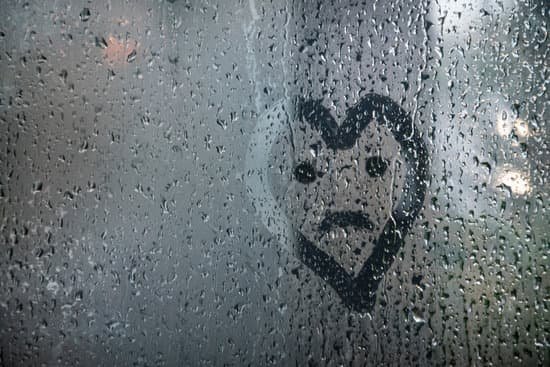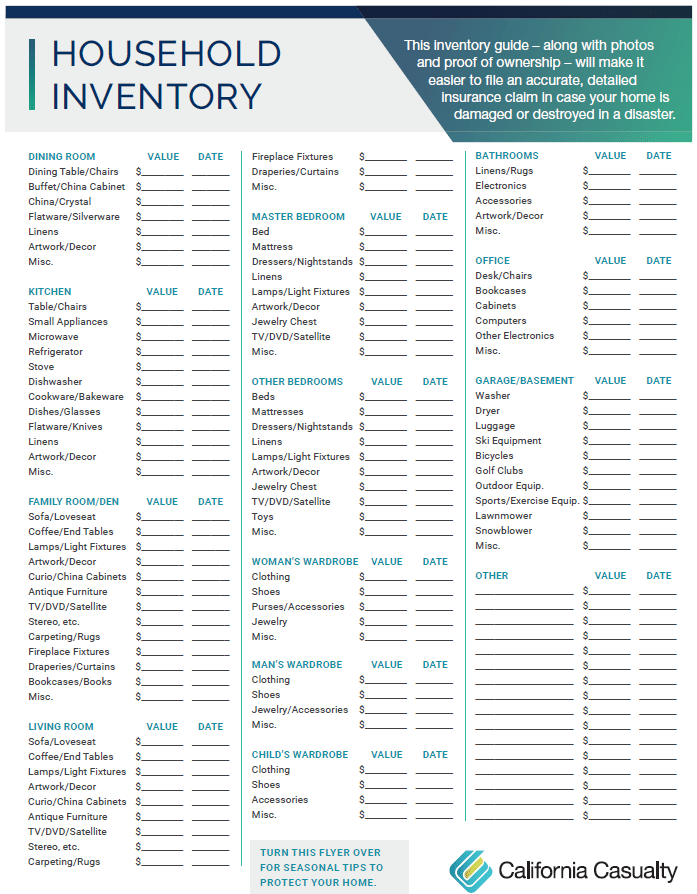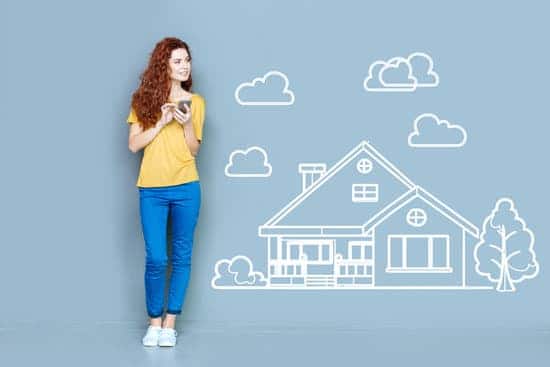by California Casualty | Homeowners Insurance Info, Safety |
 In the US, home break-ins occur about every 18 seconds. That’s pretty alarming. Not only can a thief steal your belongings, they can rob your peace of mind leaving you and your family feeling violated, scared and even angry.
In the US, home break-ins occur about every 18 seconds. That’s pretty alarming. Not only can a thief steal your belongings, they can rob your peace of mind leaving you and your family feeling violated, scared and even angry.
By taking the time to educate yourself and following some simple precautions, you’ll be better prepared to protect your family and home from a break-in ever occurring.
Know it: A security system may prevent a burglar from even attempting to break in.
Do it: Have a security system installed and monitored – and display the yard signs and window stickers you are provided.
Know it: Thieves sometimes rely on the cover of night, but most burglaries happen between 10am and 3pm while many people are at work or school.
Do it: Keep bushes and shrubs trimmed back. Consider getting motion activated security. Leave on a TV or radio. A barking dog can serve as a great deterrent to thieves – while you get to enjoy a wagging tail and a wet nose when you arrive home.
Know it: Burglars are often familiar with your neighborhood or daily schedule.
Do it: Varying your routine will make it harder for the bad guys to tell when you’re not home.
Know it: Signs that you’re on vacation or out of town for an extended period can make your home an easy target for burglary.
Do it: Put your mail, newspaper and deliveries on hold. Have a trusted friend or neighbor watch your home. Put indoor lights on timers. Some police departments offer an out of town home watch. If your local authorities provide this service, be sure to sign up several days prior to going out of town. Be vigilant about what you and your family post on social media.
Know it: 34% of burglars enter through the front door. Another 30% take advantage of unlocked windows or other unlocked doors.
Do it: LOCK YOUR DOORS AND WINDOWS! Keep your garage doors closed, even when home.
Know it: The top three things a burglar is looking for are cash, prescription drugs and jewelry but don’t doubt that these criminal opportunists will take anything they can get their hands on. Unfortunately, this often includes your identity.
Do it: Don’t leave valuables, cash or items that can be used for ID theft in plain sight or hidden in obvious places. Keep an up-to-date home inventory with a record of serial numbers from electronics to aid in filing police reports and insurance claims. Be sure to have an identity theft protection and recovery service if burglars get access to your personal or banking information.
We can’t stop all criminals, but California Casualty is here to protect you with quality auto and home / renters insurance with exclusive benefits not available to the general public. Every policy also comes with free ID theft protection.
Sources for this article:
https://www.iii.org/press-release/vacation-bound-use-these-five-prevention-tips-to-protect-your-home-against-burglars-while-youre-away-070312
https://www.safewise.com/blog/8-surprising-home-burglary-statistics/

by California Casualty | Homeowners Insurance Info |
The summer storm season is here. There has been record flooding, a rash of tornadoes, and an increase of insurance claims due to hail in many areas of the country. The National Oceanic Atmospheric Administration (NOAA) estimates that hail causes $1 billion dollars in damage to property and crops every year, and the combination of wind, hail, and flood account for over $16 billion in insured damage. Severe weather losses have risen dramatically in the past few years due to increased repair costs and the severity of the storms.
Are you prepared? A major storm is no time to find your possessions are below the water line or you have nothing to cover your windows if they should be blown or broken out. Here are things you can do now:
- Survey your property for flood potential, levees, etc.
- Make sure trees on your property are healthy and properly trimmed
- Check and clean gutters and downspouts
- Have your roof inspected to make sure it is still waterproof and will shed excess rain
- Install a sump pump in basements ( many experts recommend a second battery-powered sump pump in case of excess water or if there’s a power outage)
- Install shutters to protect your home from high winds and hail
- If you don’t have shutters, make sure you have boards 5/8 exterior grade or marine plywood to cover windows and doors
- Make sure you have flood and sewage backup coverage
- If possible, park your vehicle in a covered spot or in a garage
- Purchase a hail-resistant cover for your vehicle
- Complete a home inventory
- Prepare an evacuation kit
- Know safe evacuation routes and have a family communication plan if you get separated
Before the next storm hits, it’s important to make sure you have the proper insurance and understand what is and is not covered. Here are things you need to know:
- Most homeowners insurance does not cover the flooding from high water. Separate flood insurance needs to be purchased.
- Most homeowners insurance covers hail, wind and lightning damage to your property, often with a deductible that you pay first.
- You must have comprehensive coverage on your auto insurance policy to cover your vehicle from hail, flood, or damage from falling trees or limbs. It also usually comes with a deductible.
Here is what you should do if you suspect your home or car has suffered storm damage:
- Document the time, date and severity of the storm
- Contact your insurance company
- Work only with licensed contractors for repairs and check with the Better Business Bureau to prevent fraud
This article is furnished by California Casualty, providing auto and home insurance to educators, law enforcement officers, firefighters, and nurses. Get a quote at 1.866.704.8614 or www.calcas.com.
by California Casualty | Homeowners Insurance Info |

Be sure to download and print your copy of the Household Inventory Checklist by clicking here.

by California Casualty | Homeowners Insurance Info |
You’ve just received another rent increase from your landlord and you’re starting to wonder if it’s time to buy a home or condo. That’s the question many people are asking as rents continue to escalate across the nation. Buying a home is not for everyone, however, if you are wondering if it makes financial sense, here are some indicators that it may be time to purchase your own place.
The average mortgage payment in the U.S. is now less than the average rent. The median rent for a two-bedroom apartment in the U.S. is $1,330. But if you are in a high-cost city like San Francisco or Seattle, rents can run as high as $5,000. Renters in Austin, Chicago or Denver can expect to pay $2,000 or $3,000 for that same two-bedroom apartment. Rents have skyrocketed in many cities across the country; so high that many of us are paying 50 to 60 percent (or even more) of our income just to keep a roof over our heads. Most financial experts say you should only pay 20 to 30 percent of your income for rent, so something is out of whack.
When you weigh that against the average mortgage payment in the country, which is just over $1,100 a month (obviously higher in cities such as New York, San Francisco and Washington, D.C.), and mortgage loan rates that continue dropping into the 3 percent range, home affordability looks better and better. With a fixed mortgage your monthly costs stay the same over the term of the loan, unlike rents which can (and usually do) go up at the end of the lease.
Other economic factors that lean towards buying a home:
- Rents are predicted to rise 2 percent each year, eating more out of your paycheck
- Housing prices are rising, meaning they are a good investment against inflation
- More couples are having children and planning on buying a home, which may create shortages and push home prices even higher
- The costs associated with purchasing a home aren’t much more than first and last month’s rent, application fees and the security deposit required for most rental situations
Proponents of renting site the lack of maintenance and repair costs, as well as the freedom to move to a new area as reasons not to buy. However, renters never gain equity and they miss out on the tax advantages homes afford.
If you still have doubts, Trulia and Zillow have calculators that clearly show the current cost of buying a home is much less than renting. Run the numbers and see for yourself.
Before you buy, these are important things to consider:
- Length of stay – unless you are investing in a rising market, you should plan on staying in that home for at least five to seven years
- Down payment – to avoid mortgage insurance you will need 20 percent down; that may drain your funds
- Don’t forget about closing costs – you can often negotiate with the seller on these but there will still be inspection, title company and real estate commissions to be paid and they can add up to thousands of dollars
- Costs related to owning a home – local taxes, maintenance, repairs and insurance all add to the monthly mortgage so make sure you factor these into your budget
But there are other benefits beyond the budget to being a homeowner. You get to paint it the colors you like, knock out walls or add a room, change appliances and create the landscape plan of your dreams.
This article is furnished by California Casualty, providing auto and home insurance to educators, law enforcement officers, firefighters and nurses. Get a quote at 1.866.704.8614 or www.calcas.com.

by California Casualty | Homeowners Insurance Info |
Spring is here. As we look forward to longer, warmer days, it’s a good time to look around your home or apartment and identify the elements that might pose a danger to you or others. You might also eliminate conditions that could cause unnecessary damage.
Here are five simple things that can make your home or apartment safer.
1. Prevent break-ins.
Did you know break-ins increase in the spring and summer? The Justice Department says a home in the U.S. is burglarized every 20 seconds. Many of these are crimes of opportunity from thieves looking for an easy target. Simply locking doors and windows, not leaving garage doors open and installing extra lighting and a security system can reduce the risk. Trimming back bushes from around the home, having a dog and joining a neighborhood watch group are also good ways to deter a burglar.
2. Fire-proof your home.
Many of us may not know that fires burn hotter and faster than in the past. New tests show the open floor plans of modern homes, synthetic furniture and tons of electronics can cause a spark or a flame to flash into a major blaze in just three to five minutes. It’s important that we eliminate clutter, install smoke detectors on all levels of the home and in all bedrooms, have fire extinguishers available, and have an escape plan. It’s also essential to create defensible space around your home in case of a wildfire. Remember, too, that smoking materials are the leading cause of fire deaths.
3. Eliminate trips and falls.
While you can’t prevent all of them, you can make certain that stairs are in good repair with firm handrails, toys, newspapers and other clutter are picked up, rugs have a non-skid backing and bathrooms and showers have safety handles and no-slip bathmats. Adequate lighting inside and outside also helps. Not only will these actions protect your family, but they help prevent you from being sued if someone hurt themselves at your home or apartment.
4. Prepare for natural disasters.
This is the beginning of storm season. Do you have a safe area in case there is a tornado or earthquake? Do you know your risk for flood, fire or weather events? Now is the time to make certain your home is as disaster proof as possible, that you have an evacuation and communications plan, and prepare an emergency kit with extra food, water, medicines, etc.
5. Check appliances, pipes and wires.
Water from broken pipes, loose fittings and clogged drains can cause serious damage to your home. Inspect the backs of refrigerators, washers and other water sources for cracked pipes or rusted connectors. Frayed wires and clogged vents can cause fires, as can fireplaces and heaters that haven’t been cleaned and checked.
No matter how well you plan, you need home or renters insurance to protect your most valuable asset and your possessions. Homeowners and renters insurance also provide temporary housing and additional living costs while your home is repaired, as well as liability protection in case you get sued. Don’t forget that earthquakes and floods are not covered under your homeowner or renters insurance. You need separate policies for those.
by California Casualty | Homeowners Insurance Info |
What’s more romantic than Valentine’s Day? It’s the day of love, and no other day has as much meaning for those true to the heart. Don’t make the mistake of forgetting your special person on February 14; 53% of women said they would end their relationship if they didn’t receive a Valentine’s gift.
With that in mind, The National Retail Federation estimates that Americans will shell out almost $20 billion to show their love this year. While the average bill will come to $146 for flowers, candy and other goodies, $4.4 million will be invested in jewelry.
Their survey also found:
- 20% will give a valuable gift of jewelry (ring, bracelet or necklace)
- 15% will just give a gift card
- $681 million will be spent on pets
If the romance moves you to give a ring or another piece of expensive jewelry (keep in mind the average engagement ring costs around $5,000), make sure that you have it adequately protected. While your homeowners or renters insurance provides limited coverage for burglary or loss, high priced items need special insurance, often called scheduled personal property, to cover the amount they are worth. Scheduled personal property comes with no deductible and pays even if that diamond ring or necklace is damaged, lost, or accidently gets run through the garbage disposal. The Property Casualty Insurers Association of America recommends that you get a written appraisal of that special piece of jewelry to establish its value just in case it is lost or misplaced.
 In the US, home break-ins occur about every 18 seconds. That’s pretty alarming. Not only can a thief steal your belongings, they can rob your peace of mind leaving you and your family feeling violated, scared and even angry.
In the US, home break-ins occur about every 18 seconds. That’s pretty alarming. Not only can a thief steal your belongings, they can rob your peace of mind leaving you and your family feeling violated, scared and even angry.



